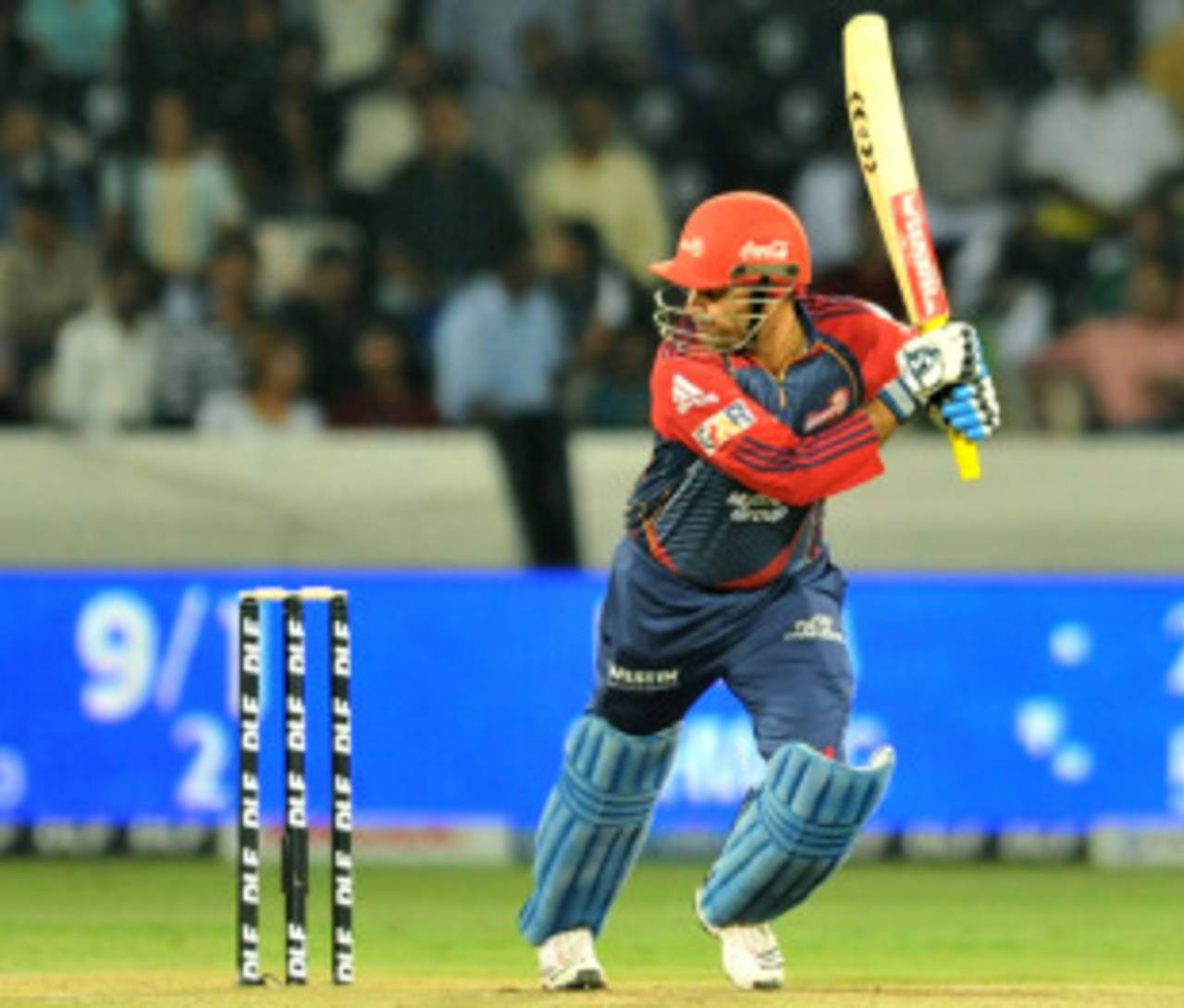A poll on a social-networking site recently declared
Chris Gayle a far more destructive batsman than
Virender Sehwag. When Gayle arrived in the Royal Challengers Bangalore camp last month, their two-year purple patch in the IPL had been crushed and the team were preparing for a premature exit. When Sehwag joined a depleted Delhi Daredevils, little did he know that he would have to single-handedly steer his team through his time in this IPL.
But while Gayle's
first-game heroics battered the Kolkata Knight Riders, Sehwag's ferocious intent couldn't do much to change Delhi's kismet. Unlike Gayle, who had Virat Kohli and AB de Villers to back his explosive style, Sehwag didn't have a strong batting line-up supporting him. Delhi won each time Sehwag clicked but it didn't happen often enough.
Though Gayle and Sehwag are both big-hitters, match-winners, and brutal on all bowling attacks, you wouldn't quite think their batting styles are comparable. Let's give it a shot, though.
Footwork
Most batsmen have a trigger movement before the bowler delivers the ball. It could be a slight shuffle across, a small press or something else that helps you get moving before the ball is delivered, which in turn helps you get into position quickly. But both Gayle and Sehwag stay completely still till as late as possible before a delivery.
The quicker the bowler, the more crucial these movements, for you don't want to be late for the ball. But these movements can also give away a batsman's preferences in terms of strokes and scoring areas. For instance, if he goes back and across, chances are he's looking for a full ball and transferring his weight on to the back leg. The only movement from that position will be a forward press. Likewise, if he plants his foot in front, he prefers short-pitched deliveries.
But these apply only to lesser mortals; great batsmen can do without. Both Gayle and Sehwag move only when the ball leaves the hand of the bowler, and hence give nothing away. In fact, even when they do move, their movements are restricted to the minimum.
The lack of foot movement may have its pitfalls but their quick hands make up. When you can't reach the delivery with your feet, the chances of missing it increase, but both these batsmen have mastered the art of throwing their arms at the ball. And the minimal movement ensures they rarely find themselves in awkward positions that might lead to their playing off-position shots.
Sharp eyes
Gayle's and Sehwag's batting seems to be based on the simple technique of see ball, hit ball. This approach can only be effective if you do the first part right. While most good players pick the line and length quickly, what separates these two from the rest is their ability to pick slower balls and other variations with ease. Love Ablish, the Kings XI Punjab medium-pacer, changes his pace and disguises his deliveries well, but he couldn't fox Gayle who delayed his downswing a fraction to send the ball over the ropes.
Ashish Nehra once told me that there are only two batsmen in the Indian team, Sachin Tendulkar and Virender Sehwag, who, when countering sudden changes in pace, don't turn their aggressive stroke into a defensive prod. Instead they wait a fraction longer and at times even convert a defensive prod into a lofted drive. Most batsmen would be too early on the shot while facing a well-disguised slower one, but not these two.
What makes Gayle and Sehwag even more dangerous is that they don't need to go down the track or generate momentum to send a spinner for six
Hitting from the crease
What makes Gayle and Sehwag even more dangerous is that they don't need to go down the track or generate bbody momentum to send a spinner for six. While Gayle prefers to give the fast bowlers the charge every now and then, like Sehwag he stays put in the crease when facing spinners. Both trust the downswing in their back-lifts to generate enough power, and it rarely ever fails them.
Astute brains
Since their batting looks simple and uncomplicated, most people discount the tactical shrewdness of these two. If the ball moves prodigiously at the start, they are happy to bide time. Even in Twenty20 games, like they did against
Punjab and
Deccan Chargers respectively, where they allowed the early swing to fade away before exploding.
Gayle and Sehwag always target certain bowlers in the opposition and play strokes that may look ambitious but are percentage shots. They also trick bowlers by wildly heaving at and missing deliveries intentionally. Once, in a domestic game on a poor surface, Sehwag stepped down the track and played a rather ambitious shot, only to miss the ball by a mile. It looked suicidal but he had a plan in mind. He charged the bowler because he wanted to force him to shorten his length, which he did the following ball, to be dispatched to the fence. Gayle does the same against many quick bowlers only to sit deep inside the crease on the following ball. There are astute cricket brains working behind those rather calm facades.
Both Gayle and Sehwag may have two Test triple-centuries to their names, but their recent performances in Twenty20 have been just as pleasurable to watch. Unless, of course, you are the hapless prey in their sights.
Former India opener Aakash Chopra is the author of Beyond the Blues, an account of the 2007-08 Ranji Trophy season. His website is here and his Twitter feed here
